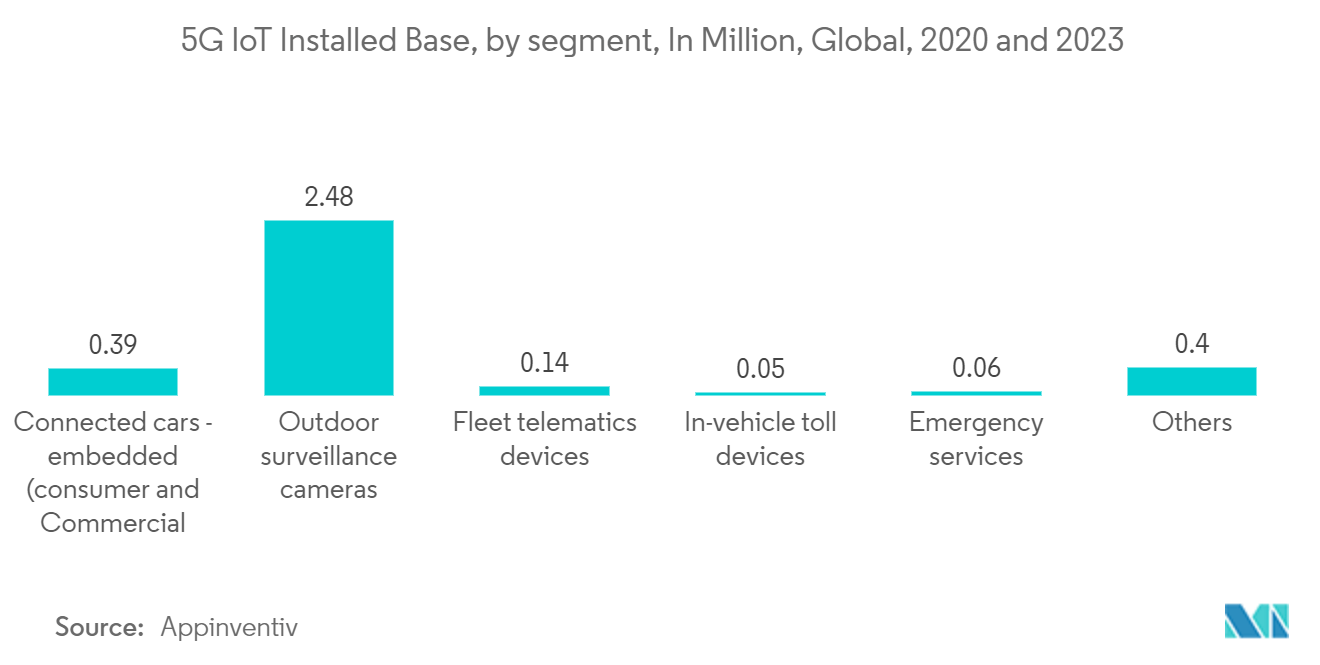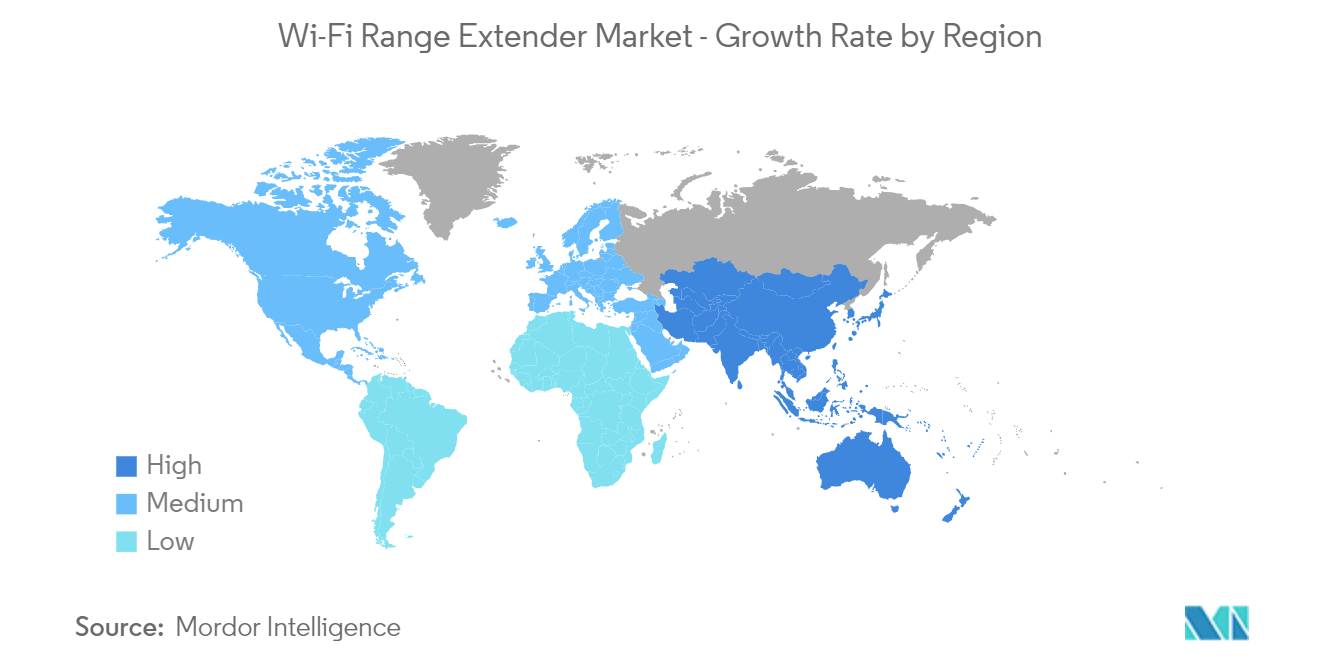Market Trends of Wi-Fi Range Extender Industry
This section covers the major market trends shaping the Wi-Fi Range Extender Market according to our research experts:
Proliferation of Smart Cities and Smart Homes Drives the Market Growth
- The proliferation of the connected homes concept and the advent of the smart home ecosystem are other factors expected to augment the market's growth. Moreover, wireless routers targeted at businesses have improved tremendously over the past few years. The best models offer dual or triple-band connectivity and many other features, usually in far more expensive enterprise-grade models. However, the range of routers has always been a major challenge for large office spaces, and the evolution of extenders and repeaters has shown promise to provide a viable solution.
- In the coming years, smart cities are projected to fuel the global Wi-Fi range extender market's development potential. Similarly, this increased interest in open Wi-Fi networks from many purchasers, including healthcare, waste and water management, infrastructure management, educational access, and safety and security. Furthermore, as the need for open Wi-Fi systems increases, more Wi-Fi switches would be deployed in public locations, boosting the demand for Wi-Fi switches with a broader zone scope and faster Internet speeds.
- Smart cities and smart homes are growing tremendously and transforming modern life. A smart home is a residence that has installed smart products/devices, such as smart security systems, smart entertainment systems, air conditioners, smart televisions, and many more devices. With the rapid increase in the sales of smart home devices, the Wi-Fi range extender market is poised to grow further.
- Smart products/devices used in smart homes/offices must be connected to the internet to work seamlessly and, thus, require Wi-Fi range extenders for an increased range of a normal Wi-Fi router. The overall demand for smart products is poised to increase owing to technological innovations, consumer interest, and greater accessibility.
- A smart city consists of smart systems, like smart traffic systems, smart buildings, smart water management, smart waste management, and a couple of IoT devices, among others, which need an internet connection to provide useful data to keep track of the resources. This is expected to boost the market studied.
- The increasing adoption of IoT devices is augmenting the growth of Wi-Fi range extenders. According to Apatative, The global 5G Internet of Things (IoT) endpoint market is expected to develop rapidly, from 0.4 million units in 2020 to 19.1 million units in the current year. The 5G IoT installed base is expected to reach 49 million by the end of the current year. The advent of IoT and changing consumer preferences towards purchasing various gadgets and wearables capable of operating and performing various functions with internet connectivity is also set to propel the wireless routers' growth and associated markets over the forecast period. The demand for the internet among various households has been increasing with the growth in connected devices.

North America to Hold the Largest Market Share
- North American region is a pioneer in the Wi-Fi range extender market and is expected to hold the largest share. Moreover, the region has a strong foothold of vendors like Netgear Inc.
- The major factor contributing to the growth of the Wi-Fi extender market is the rising utilization of wireless services among numerous end users. The Wi-Fi extender is majorly used in the region, owing to the large number of residential users adopting connected device technology. Most companies test and launch their products and services in the region before the global launch and deployment of the product.
- Further, the growth of network-connected devices, systems, and services using the Internet of Things (IoT) creates enormous opportunities and benefits. Moreover, US consumers are increasingly using IoT devices for various applications.
- Also, with the rising number of consumers embracing the smart home environment in the United States, IoT is further expanding across the North American region. Many smart homes have already been connected to North America.
- The growing acceptance of IoT in the region is also significantly driving the studied market. Furthermore, devices such as IoT-enabled medical wearable temperature sensors to remotely transmit data to a central monitoring system are already in deployment mode. Medical staff is signaled based on trends and thresholds, identifying the patient and room, and can respond accordingly.


